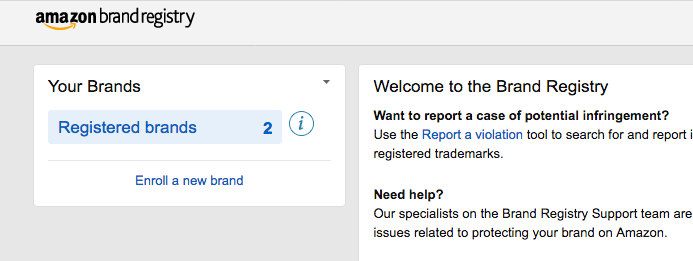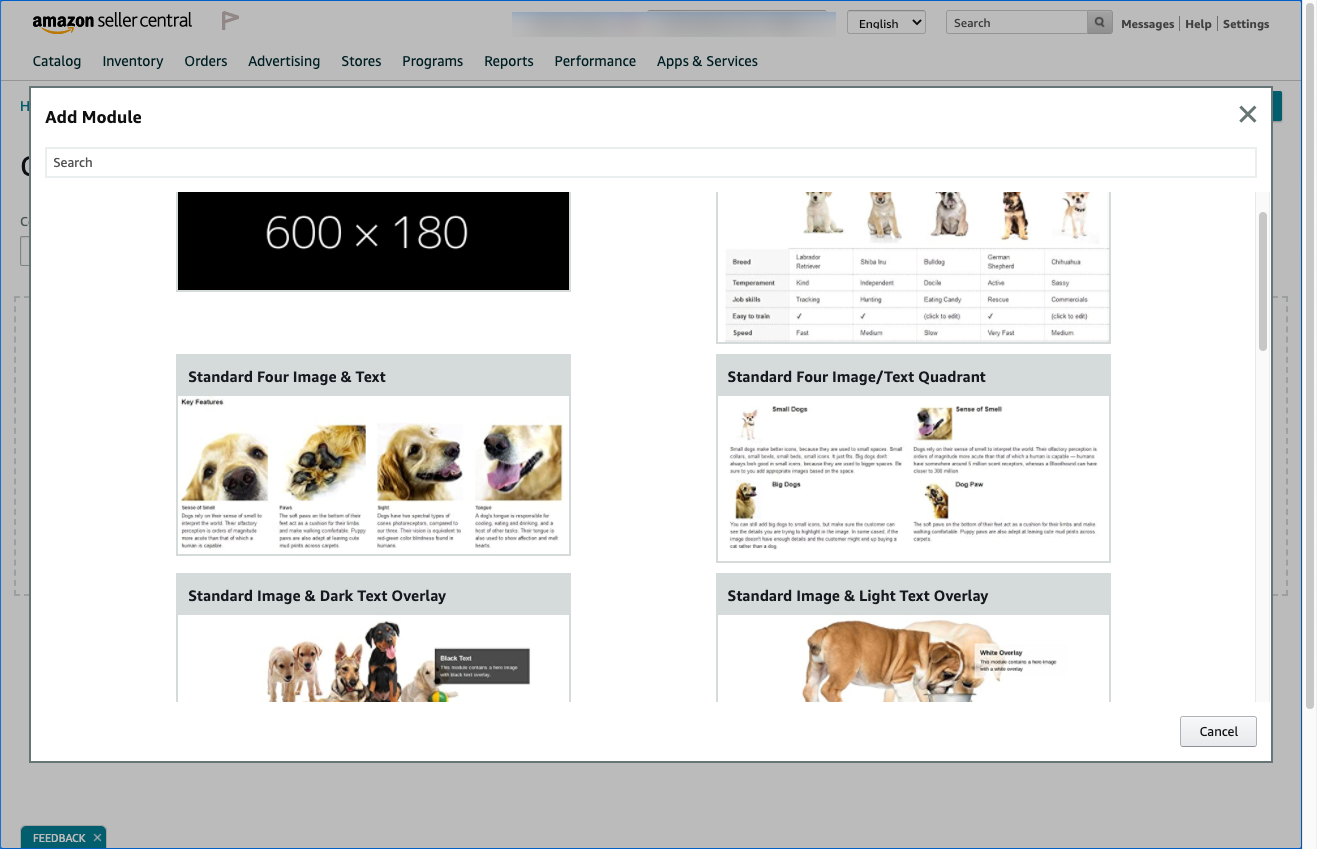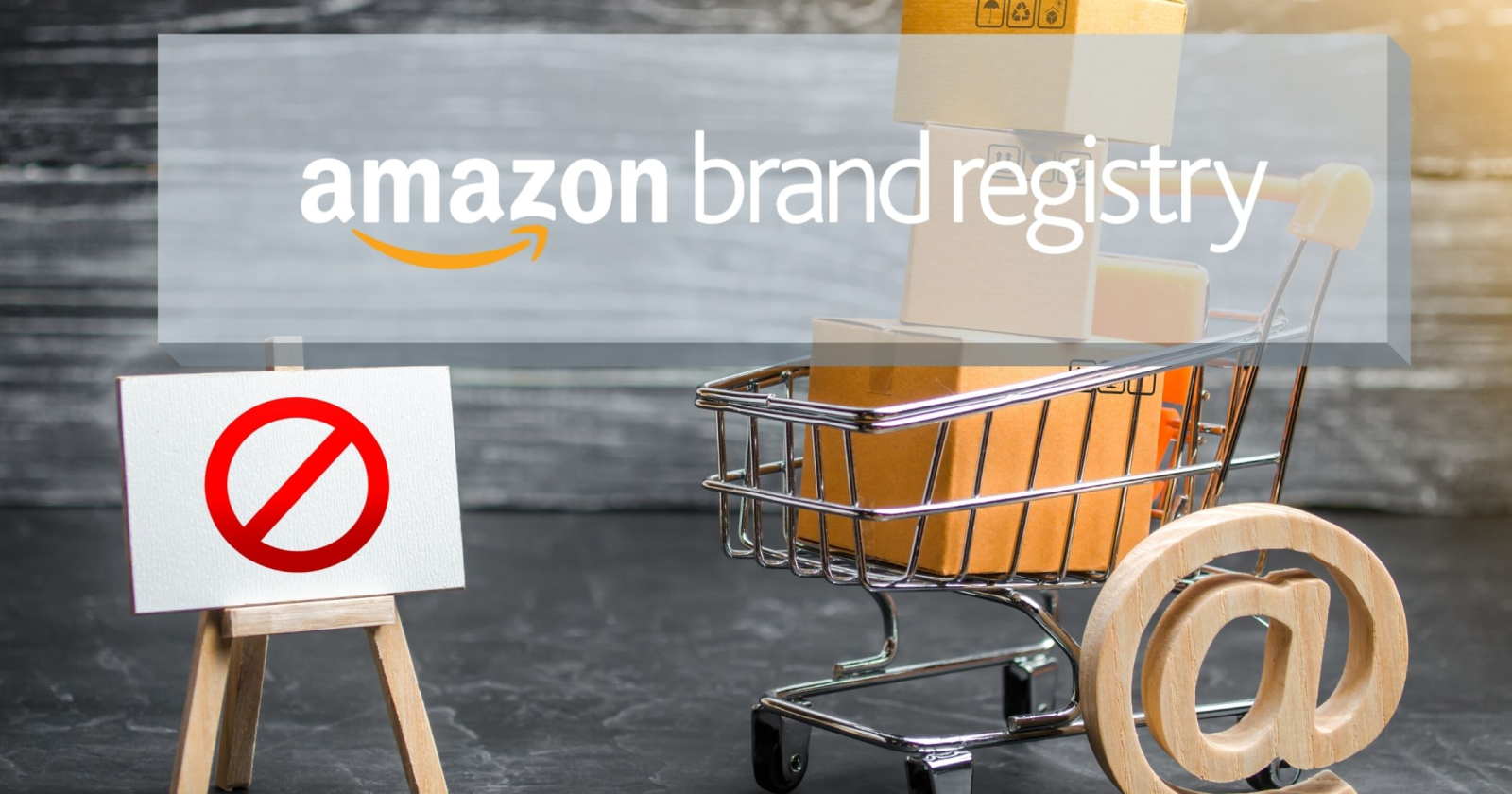“I have enrolled in Amazon Brand Registry, but where can I remove unauthorized sellers?”
This is one of the most frequently asked questions in most forums and groups regarding selling on Amazon.
Sometimes, it’s even worse:
“I just signed a contract to help remove unauthorized sellers with a brand. They have Brand Registry. How do I do that?”
It is true.
Amazon Brand Registry is all about protecting your brand.
However, Amazon has made it clear that they do not want to be involved with distribution rights.
“Amazon respects a manufacturer’s right to enter into exclusive distribution agreements for its products. However, violations of such agreements do not constitute intellectual property rights infringement. As the enforcement of these agreements is a matter between the manufacturer and the retailers, it would not be appropriate for Amazon to assist in enforcement activities.”
So, contrary to what you may have heard, that means you cannot gate your products or your brand with the Brand Registry program.
Amazon gates products on occasion.
Generally speaking, this happens when:
- There is a proven, consistent pattern of counterfeit issues.
- There is a substantial potential product safety issue.
Additionally, Amazon will sometimes remove a seller if it can be shown that they have counterfeit products.
For the most part, brands do not get to decide if or how their products will be restricted for third-party sellers.
I realize this might go against everything you have heard about the Brand Registry program.
Misuse of the program was widespread as it first debuted.
There were entire businesses set up around knowingly filing false intellectual property claims against sellers.
This has resulted in everything from lawsuits to Amazon removing the ability for some brands to file claims on their site.
But before you write off Brand Registry as useless, keep reading.
The features of Brand Registry make it one of the most important programs for successfully launching and marketing products on Amazon.
Amazon has been slowly adding to the tools available to brand owners to help make the prospect of selling on Amazon Seller Central more and more enticing.
A complete guide on Brand Registry should, of course, give you an idea of all the aspects of the program.
Below I have highlighted just some of the special programs that are currently available once enrolled in Brand Registry.
I also have some specific information on trying to reduce or eliminate third-party sellers further along in this article.
Let’s go through exactly what the Brand Registry program is and some of the benefits it offers that you might not know about.
We use benefits from these programs every day to help the brands we work with quickly increase their sales and profitability, as well as make Amazon less maddening overall.
Amazon Brand Registry Basics
Amazon Brand Registry is a program that helps brand owners protect their intellectual property through trademark, copyright, and patent protection.
With Brand Registry, you can:
- Report misuse of your trademark.
- Report copyright violations.
- Report patent violations.
- “Lock” the content on the product detail pages from changes for your brand.
Inside the Brand Registry portal, you can search for misuse of your trademarks quickly and use the forms to report any violations directly to Amazon.

While being able to report intellectual property violations is critically important as you navigate Amazon, what makes Brand Registry so important is the additional programs you gain access to through it.
Brand Registry is the abracadabra of the Amazon world.
Struggling to get more reviews?
Want access to a fancy new ad placement?
Tired of pulling your hair out trying to get your listings changed?
Brand Registry will help you with all of that and a lot more.
What Else Do You Get Access to with Brand Registry?
Not to sound too much like a version of a late-night infomercial, but wait, there is more…
Gaining access to additional programs that many sellers don’t know anything about, use the tools you have access to from Brand Registry as your secret weapon to get ahead of your competition.
Listing Benefits
In addition to the ability to “lock” your content for product detail pages against changes, you also gain access to other modules in Seller Central that give your listings an advantage.
Note: Some of these programs are available in Vendor Central without Brand Registry.
A+ Content (Formerly Enhanced Brand Content)
You might have seen this on competitors’ listings. This is the additional area under “From The Manufacturer.”
Amazon tells us that A+ content has been shown to increase conversion on listings by 7–11%, and it allows you to really highlight your brand and all of your items’ unique selling features.
 A+ Listings can help increase conversion. Content for this portion of your Amazon listing is done by building out modules and submitting them for approval.
A+ Listings can help increase conversion. Content for this portion of your Amazon listing is done by building out modules and submitting them for approval.Brand registry allows you to add videos to your Amazon listing, right there under the images.
This can be a huge boost to your conversion rate, as it allows you to really show your product in action.
With the rules about sending messages and emails to Amazon customers getting tighter and tighter, getting reviews for your products has become harder and harder.
Amazon Vine allows you to give products to Amazon-approved buyers in exchange for an honest review.
Just a little word of warning, however. This is a very honest review.
Make sure you have used programs like the Early Reviewer Program to ensure that customers are having positive experiences with your products.
This program is very new to the Amazon platform. It allows you to kit together specific ASINs to create bundles.
For example, if you sell a water balloon launcher as well as water balloons, you can have an additional ASIN selling the two products together.
The real benefit of this program is that you do not have to designate inventory specifically for this bundle. Amazon pulls from your existing stock.
Search Term Optimizer
Maximizing the words you are indexed for is vital to organic optimization on Amazon.
The Search Term Optimizer is part of the Brand Dashboard, and it searches for backend keywords that are duplicated so that you can free up more characters to index for additional keywords.
Traffic & Advertising
Several components of Amazon Brand Registry allow you additional program access to specific marketing products on Amazon.
Sponsored Brands (Formerly Headline Search Ads)
Currently, on Seller Central, these ads appear in the form of banners at the top of search result pages.
As a result, they have larger screen real estate compared to sponsored products. This ad type allows for some control over the ad creative.
This ad type has even more flexibility over the creative. It is also the only ad type on Amazon that allows for the retargeting of customers.
Amazon allows you to create a store page to showcase all your products and/or your brand story.
Store pages help build a more authoritative presence on Amazon.
In addition, they can help drive traffic for your listings and be utilized with sponsored brand ads to increase your conversion rates.
Amazon Live allows brands to create live streams to showcase the benefits of their products or to interact with their clients in real-time.
Analytic Benefits
Brand Registry also opens up specific analytic tools in Seller Central and Vendor Central.
Brand Dashboard
The Brand Dashboard is a fairly new component to Seller Central that allows you to see, at a glance:
- Potential pricing competitiveness.
- Prime eligibility.
- In-stock rate.
From this dashboard, you can also conveniently access other tools, such as Manage My Experiments, as well as manage your customer reviews.
This is a treasure trove of data that was previously unavailable to Amazon sellers.
Brand Analytics gives sellers insights into search terms or specific products.
These include the search term rank, the most clicked-on product, conversion rates, and other useful information for making informed decisions.
This Beta feature on Amazon will allow sellers to test the effect that A+ changes can have on their product performance.
This program allows sellers to unify their advertising measurements and analytics to track sales that come from off Amazon advertising like Facebook.
Getting Access to Brand Registry
Any brand can become part of the Brand Registry program.
If you have a live trademark, registering is easy.
Be sure to use the same email login as the primary login for your selling account.
Never let a third-party seller or agency register on your behalf with their login.
Always use your own login, and once you have access to the program, you can add more sub-users to your brand registry account.
If you don’t have a live trademark, you can still access the Brand Registry program through the IP accelerator program.
This usually takes two to six weeks.
Be cautious of agencies or third party sellers offering to file infringement claims on your behalf.
If Amazon sees multiple false IP claims, they have restricted the ability for specific agents and companies from filing further complaints through the program.
If you enrolled in Brand Registry a long time ago but you don’t have access to most of these programs, you might be in an older version of Brand Registry.
To gain access to these features, you may need to re-register your brand.
Controlling Third-Party Sellers
All that being said, many people turn to Brand Registry because they are trying to get control of their products on Amazon.
The reason this is much more difficult compared to other platforms is that every listing is community property; no seller or brand ever truly owns a listing.
When used strategically, utilizing third-party sellers can actually be a way for you to reduce the capital needed to optimize your presence on Amazon.
Too many sellers can cause big problems.
In general, the more sellers on a particular SKU, the less stable the pricing for that product can become.
There are some common-sense tactics that you can use to help control the distribution of your products on Amazon.
Clear Reseller Agreements
Having clear reseller agreements and posting about those agreements clearly on your line sheets is a great way to start controlling the number of sellers.
While Amazon will not get involved in these specific agreements, you can use your own legal team to enforce these contracts.
Controlling Distribution
Your distribution chain will have a large part to play in how easy this is to accomplish.
If you are using distributors or selling to national big box stores, occasionally selling to Amazon on Vendor Central is your best option to discourage third-party sellers.
If your distribution is slightly narrower, carefully monitoring and tracking third-party sellers could be a solution.
Amazon has also announced that in just over a month, all legal business names and the addresses of all third-party sellers will be available on the site.
This will allow you to quickly identify any holes in your distribution.
Test Buys
If you have products you feel could potentially be counterfeit, completing a test buy is the best way to test this theory.
Make sure to take photos of the item as it arrives and the product you received, and include these in your report to Amazon.
Often when we do test buys, we are quickly able to identify the third-party seller if they are dropshipping.
Then, we have the brand we are working with cut off the supply to that seller in the future.
Transparency
If you are experiencing consistent counterfeit issues, then you may want to look into the transparency program.
This will help you to prevent any further counterfeit issues.
In doing so, however, you will have to take into account that you will need to attach a unique bar code to every item you produce of that SKU, regardless of the sales channel.
Overall the use of Brand Registry along with the special programs connected with it can allow you to better market your product and better control how your brand is presented on Amazon.
The topic of how to use Brand Registry could be a full-day workshop by itself.
There is no way to completely summarize everything you can and cannot do in a few thousand words.
As Amazon continues to work in new programs to court products to sell directly on Seller Central, you will likely see even more opportunities to help you maximize your sales volume and control your brand presence on Amazon.
More Resources:
- Amazon Brand Analytics: Getting the Most Out of Your Sales on Amazon
- An Advanced SEO Guide to Top Rankings on Amazon
- What’s Up With the Rise of Retailer Media Networks?
Image Credits
Screenshot taken by author, July 2020





